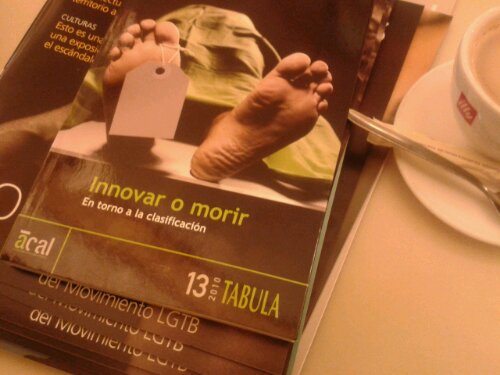http://m.thetyee.ca/ArtsAndCulture/2012/01/06/Neuromancer-Movie
Two who are turning the 1984 book into a film and game explain why now’s perfect timing.
By Mark Leiren-Young, 6 Jan 2012, TheTyee.ca

Neuromancer couldn’t have worked as a film 20 years ago, says director.
When Neuromancer was published in 1984, William Gibson redefined the future of the future by creating the concept of cyberspace. Almost 30 years later a team of filmmakers and game creators are hoping Neuromancer will redefine the way movies are made and media platforms are created, crossed, criss-crossed and combined.
Gibson’s movie career to date has been bizarre — Johnny Mnemonic, an adaptation of a short story featuring Keanu Reaves at his whoa-dudiest as the cyber-cowboy title character; a painful low-budget adaptation of his short story New Rose Hotel; a couple of X-Files episodes with sentient computers and a Gibson-scripted draft of Alien 3 that was reduced to scrap except for one concept — a bar code tattooed on the prisoners for ID. Meanwhile, his books continue to redefine reality and rock the bestsellers lists. The newest book by the Vancouver-based cyberpunk icon, Distrust That Particular Flavor — a collection of his essays — was released this week.
Neuromancer is a dystopian mystery involving a hack of a computer hacker given an irresistible job by a shadowy boss. At a special forum as part of the 2011 Toronto International Film Festival, Trevor Fencott talked about adapting Neuromancer for gamers at the same time writer-director Vincenzo Natali (Cube, Splice), present via the magic of Skype and a big screen projector, talked about developing Neuromancer the movie. They were joined by Jay Firestone, who talked about the 12 years he’s spent trying to bring Neuromancer to the big screen. The Space Channel’s Mark Askwith moderated and asked most of the questions, starting with when everyone discovered the source code for all these new projects — Gibson’s book.
Natali first read it before it caught fire. «Popular culture absolutely had not caught up to it and when I read it, it was definitely mind-blowing. I’m sure it falls into the same category as Dune or Martian Chronicles or Rendezvous with Rama as one of the great works of science fiction. So in my mind it’s always like a pillar of great speculative fiction, and never in my wildest dreams did I think that I would actually be working on it. It’s a very intimidating process, trying to adapt the book.»
Fencott read the book almost as soon as it was published. «I was probably one of the early adopters, maybe ’85, really shortly after it came out. I was the high school AV robotics nerd, so it really was one of those things that was required reading. I think it had a profound effect on me,» says Fencott. «I think it really shaped a lot of my desire to experiment with computers as communications devices as opposed to just computational devices… The idea of a hacking deck [a Neuromancer creation] and an iPad are not so dissimilar. The idea that you can be connected at all times, jacked into things at all times, is something that was completely alien in the ’80s.»
Firestone came to the book after working on the movie version of Gibson’s Johnny Mnemonic. «I’m not that artistic to be honest. I put together Johnny Mnemonic when I was at Alliance, did all the business side, made sure we made a lot of money on it and all those kinds of things, but never showed up on set. So afterwards when it was done and I left, I thought I’d go after Neuromancer and actually produce it this time, and not just get the money together. I developed it for a little while, lost it when I sold the company, got it back again, then lost it again. And then two years ago bought it back again, a third time. And when I took it back I went to Vincenzo and now, for the first time in 12 or 13 years, it feels real.» Sigue leyendo «Is William Gibson’s ‘Neuromancer’ the Future of Movies?»







